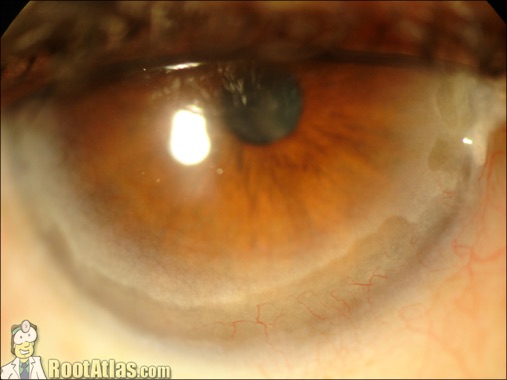

Meanwhile, a research article published in 2018 reported that evidence has not shown any hereditary link to PMD. However, a recognized hereditary link does not exist for most people diagnosed with keratoconus. An article in the Journal of Ophthalmology notes that first-degree relatives of someone with keratoconus are at much higher risk for keratoconus than the general public. In addition, keratoconus causes an astigmatism (eyesight problem of blurriness) that worsens over time as the abnormal corneal elongation progresses. As the “bulge” progresses over time, the cornea thins – and this can produce both worsened nearsightedness and corneal pain.

The hallmark of keratoconus is a cornea that is cone-shaped rather than dome-shaped (per the Mayo Clinic). For this reason, a keratoconus-afflicted person is more likely to be diagnosed at an earlier age than a person afflicted with Pellucid Marginal Degeneration. While keratoconus often presents with symptoms in adolescence, PMD symptoms often do not appear until between age 30 or later. In contrast, tomography in a person with solely PMD typically reveals inferior steepening (at the four o’clock and eight o’clock positions) with superior flattening. Inferonasal or inferotemporal steepening of the cornea is the abnormality typically revealed by tomography in keratoconus-afflicted people. The following describes the similarities and differences between keratoconus and PMD.ĭiagnosing Pellucid Marginal Degeneration According to the American Academy of Ophthalmology, 10 percent of PMD cases are associated with keratoconus. While both are considered cornea ectatic disorders, PMD is characterized by slightly different cornea abnormalities, and does not plateau at around age 40 as typical for keratoconus. Progressive eyesight deterioration can occur due to keratoconus and pellucid marginal degeneration (PMD).


 0 kommentar(er)
0 kommentar(er)
